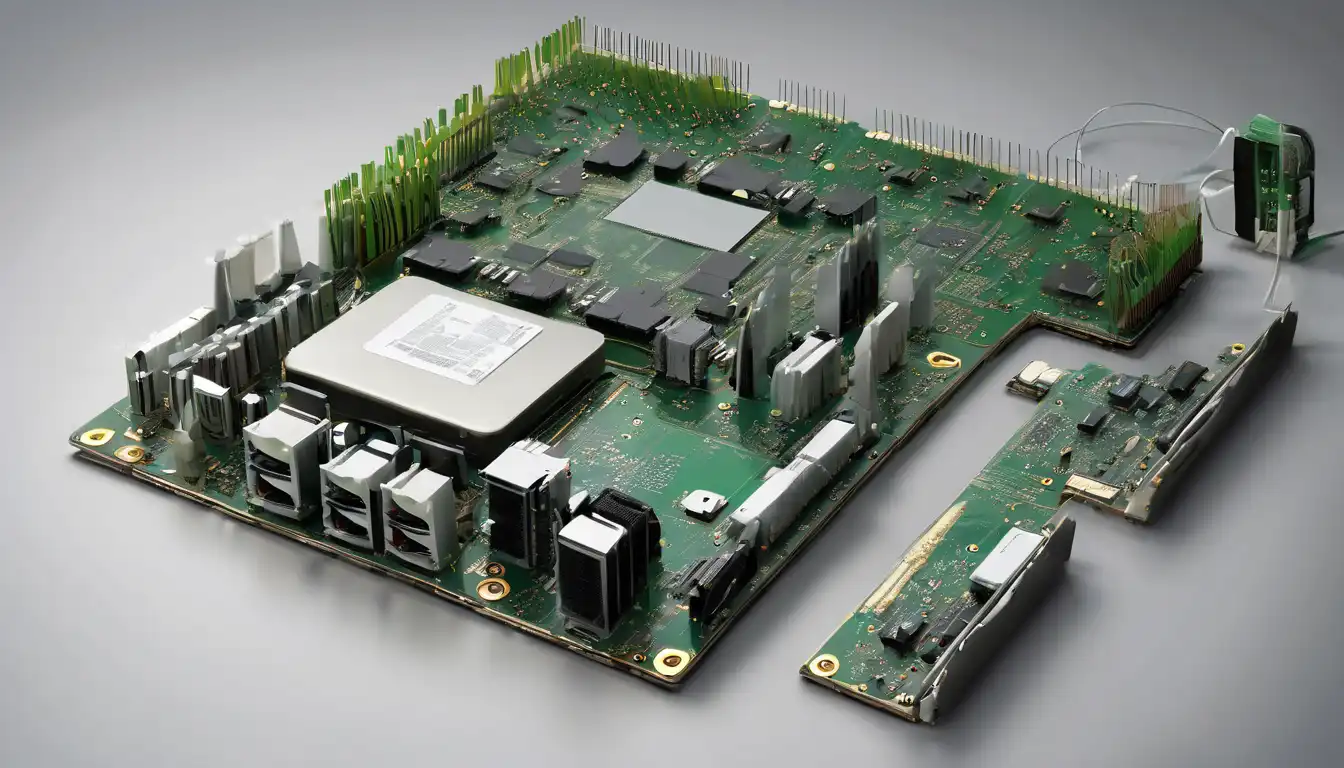Introduction to Sustainable Computing
In today's digital age, where technology permeates every aspect of our lives, the environmental impact of computing has become increasingly significant. Sustainable computing represents a crucial shift toward eco-friendly hardware solutions that minimize environmental damage while maintaining performance. This comprehensive guide explores the innovative approaches and technologies driving the green computing revolution.
The concept of sustainable computing extends beyond simply reducing energy consumption. It encompasses the entire lifecycle of hardware, from manufacturing and usage to disposal and recycling. As global awareness of climate change grows, businesses and consumers alike are seeking hardware solutions that align with environmental sustainability goals.
The Environmental Impact of Traditional Computing
Traditional computing hardware contributes significantly to environmental degradation through various channels. The manufacturing process alone consumes substantial energy and resources, while electronic waste (e-waste) poses a growing threat to ecosystems worldwide. Understanding these impacts is essential for appreciating the importance of sustainable alternatives.
Key environmental concerns include:
- High energy consumption during operation
- Resource-intensive manufacturing processes
- Toxic materials in electronic components
- Rapid obsolescence leading to e-waste
- Carbon emissions from data centers
Energy-Efficient Processors and Components
Modern processors have made remarkable strides in energy efficiency. Companies like Intel and AMD now prioritize performance-per-watt metrics, developing chips that deliver powerful computing capabilities while minimizing power consumption. These advancements are crucial for reducing the carbon footprint of computing devices.
Energy-efficient components extend beyond processors to include:
- Low-power memory modules
- Efficient power supply units (80 Plus certified)
- Solid-state drives with lower energy requirements
- Advanced cooling systems that reduce fan power consumption
Sustainable Manufacturing Practices
The journey toward eco-friendly hardware begins with sustainable manufacturing. Leading technology companies are adopting greener production methods that reduce water usage, minimize waste, and utilize renewable energy sources. These practices significantly lower the environmental impact of hardware production.
Innovative manufacturing approaches include:
- Closed-loop water systems in fabrication plants
- Use of recycled materials in component production
- Renewable energy-powered manufacturing facilities
- Reduced chemical usage in semiconductor production
Modular and Upgradeable Hardware Design
Modular design represents a fundamental shift in hardware philosophy. Instead of replacing entire devices when components become outdated or fail, modular systems allow users to upgrade specific parts. This approach extends product lifespan and significantly reduces electronic waste.
Benefits of modular hardware include:
- Reduced e-waste generation
- Cost-effective upgrades
- Customizable performance based on needs
- Easier repairs and maintenance
Renewable Energy Integration
Hardware solutions that integrate seamlessly with renewable energy sources represent the future of sustainable computing. Solar-powered devices, energy-harvesting components, and systems designed for off-grid operation are becoming increasingly viable. These innovations enable computing in remote areas while reducing reliance on fossil fuels.
Renewable integration strategies include:
- Solar-powered computing devices
- Energy-efficient data centers powered by renewables
- Hardware optimized for variable power inputs
- Battery systems designed for renewable charging cycles
Eco-Friendly Materials and Recycling
The choice of materials in hardware manufacturing plays a critical role in sustainability. Biodegradable plastics, recycled metals, and non-toxic components are becoming standard in eco-conscious hardware design. Additionally, comprehensive recycling programs ensure that end-of-life devices don't contribute to environmental pollution.
Material innovations include:
- Plant-based bioplastics for casings
- Recycled aluminum and magnesium alloys
- Lead-free soldering techniques
- Modular designs that facilitate component recycling
Data Center Sustainability
Large-scale computing facilities represent some of the biggest energy consumers in the technology sector. Sustainable data center design incorporates advanced cooling systems, energy-efficient servers, and renewable energy integration. These measures significantly reduce the environmental impact of cloud computing and data storage.
Key data center sustainability features:
- Liquid cooling systems for improved efficiency
- AI-powered energy management
- Heat recycling for nearby buildings
- Renewable energy power purchase agreements
Consumer Choices and Sustainable Computing
Individual consumers play a vital role in promoting sustainable computing practices. By choosing energy-efficient devices, supporting companies with strong environmental policies, and properly recycling old equipment, users can drive market demand for eco-friendly hardware solutions.
Consumer action steps include:
- Selecting Energy Star certified devices
- Choosing manufacturers with sustainability certifications
- Extending device lifespan through proper maintenance
- Participating in manufacturer take-back programs
Future Trends in Eco-Friendly Hardware
The future of sustainable computing looks promising, with emerging technologies offering even greater environmental benefits. Quantum computing, neuromorphic chips, and biological computing represent potential breakthroughs that could revolutionize energy efficiency in computing hardware.
Emerging trends to watch:
- Photonic computing for reduced energy consumption
- Biodegradable electronic components
- Energy-harvesting processors
- Circular economy models for hardware
Implementing Sustainable Computing Solutions
Adopting sustainable computing practices requires a comprehensive approach that considers both hardware selection and usage patterns. Businesses and individuals can implement various strategies to reduce their computing environmental footprint while maintaining productivity and performance.
Implementation strategies include:
- Conducting energy audits of computing infrastructure
- Developing hardware refresh policies based on sustainability
- Implementing power management settings
- Choosing cloud providers with strong environmental credentials
Conclusion: The Path Forward
Sustainable computing represents not just an environmental imperative but also a business opportunity and technological challenge. As eco-friendly hardware solutions continue to evolve, they offer the potential to reconcile our digital lifestyle with planetary health. By embracing these innovations and supporting sustainable practices, we can build a computing future that serves both human needs and environmental sustainability.
The transition to sustainable computing requires collaboration among manufacturers, consumers, and policymakers. Through continued innovation and conscious choices, we can create a technology ecosystem that minimizes environmental impact while maximizing computational capabilities. The future of computing is green, and the time to embrace it is now.
